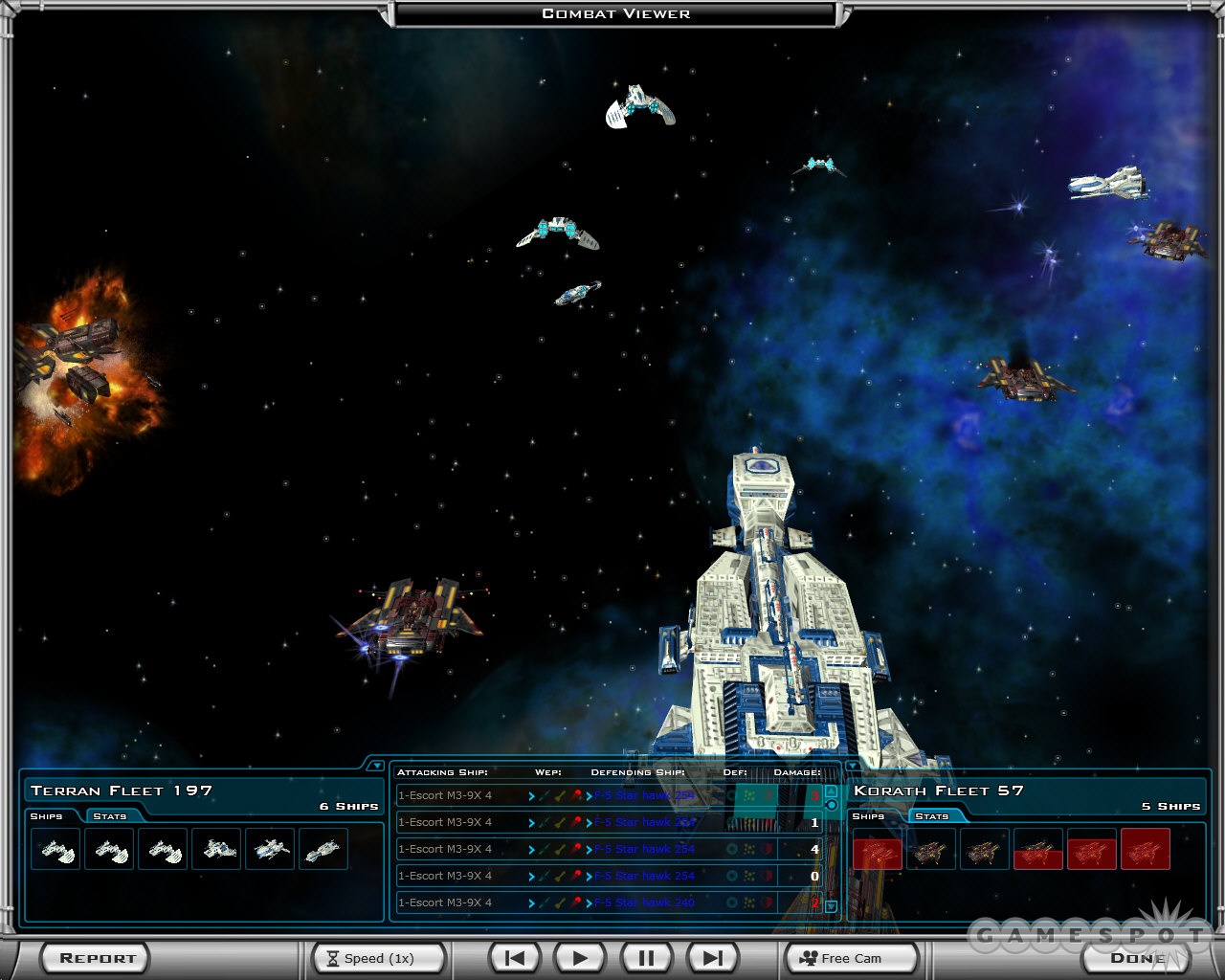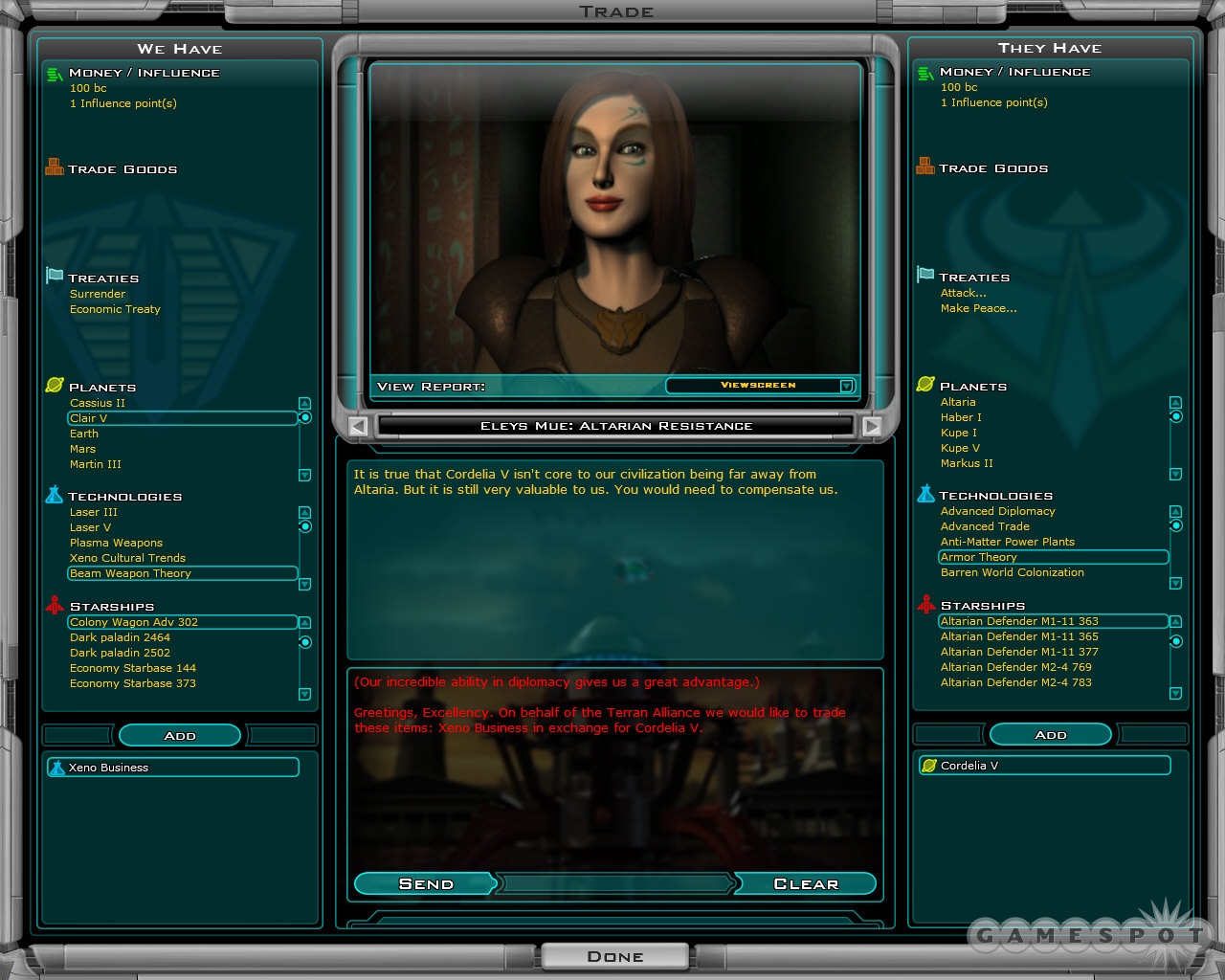Galactic Civilizations II: Dark Avatar Q&A - AI, Creating Opponents, and Final Thoughts
Stardock CEO Brad Wardell talks about how you can create your own opponent in this turn-based space strategy game.
Last year's Galactic Civilizations II: Dread Lords proved to be one of the best strategy games of 2006, as well as a shining example of the turn-based space strategy genre. Your job in the game is to conquer the galaxy one planet at a time, but standing in your way are rival empires. Thankfully, the game's deep strategic gameplay lets you manage all aspects of your empire, including the military, economic, and political spheres. The upcoming expansion, Galactic Civilizations II: Dark Avatar, has enough new content for a proper sequel. To learn more, we caught up with Stardock president and CEO Brad Wardell. Dark Avatar ships next week.
GameSpot: Tell us about the enhancements and changes that have been made to computer opponents in Dark Avatar. How will they be more realistic? How will they be more challenging?
Brad Wardell: The biggest set of changes comes with the new CPU options available. When making the original Galactic Civilizations, I always had to be extra careful about how CPU-intensive the algorithms were, because I didn't want players to have to wait around for the computer players to think of their moves.

But with Dark Avatar, I knew a lot of people either had dual core CPU or better computer setups, or they were serious strategy gamers who wanted to have their computer players as intelligent as possible and would like the option to see them turned up. So what I did is write a series of new algorithms that made use of more analysis and data when deciding what to do. Examples include deciding which ships to attack, which technologies to research, which planetary improvements to build, and so on. The difference is pretty noticeable to regular players of the game, because they'll see the artificial intelligence make remarkably different choices onscreen when it comes to the handling of tactical battles. They'll see ships literally bypass a closer ship to take out a different ship that is more valuable. They'll notice that the AI's economy is more vibrant due to better research choices. When they conquer planets, they'll hopefully notice a more intelligent choice of buildings on the planets.
GS: The Galactic Civilizations series has traditionally been all about creating a customized experience--playing longer or shorter games in bigger or smaller star systems, customizing starship fleets, and so on. How will Dark Avatar let players have an even more custom-built experience?
BW: By far the biggest change, in terms of creating a customized user experience, is enabling players to design their own opponents. Players can not only decide what the computer-controlled players are called, what they look like, what their personalities are like, and more, but they can even design the template ships that the computer players use for various classes of ships. So a player could literally create one civilization that uses ships the player has previously designed that look like something from their favorite sci-fi TV series and another from a sci-fi movie and pit them against each other, as well as against the player. Players can also set up how much money each civilization gets versus the player, how aggressive they are, which algorithms they get to use, and more.
GS: Tell us about the graphical enhancements in Dark Avatar. Give us some examples of how the game will look noticeably better. How well will the new graphics scale for players with lower-end computers?
BW: The good news is that the new graphics actually use less physical memory than the old ones. The reason for this is because we learned how to make textures that can be shared between ships. Previously, we had very low-resolution textures that we used from ship to ship. Now, we have much higher resolution textures that other ships and components can make use of.
Another area we improved on is the weather effects and other planet effects. For instance, you can actually see ships orbiting planets on the main map, which makes each world look more lifelike. What players will notice overall is that the game just looks more polished and more up to date than the original.

GS: Tell us about the "mega events" feature and how it will work, now that development is complete. Why were they added to the game?
BW: Mega events can be best described as intelligent events that are game altering. Rather than just having random events that don't do very much, we decided to have events that actually look at what is happening in the game and then try to shake things up. These mega events are intentionally debalancing--they can really alter the strategic balance of a given game (which is why mega events are optional). But for players who have played the game a lot, it's a great way to add more replayability.
GS: If you had to pick one of Dark Avatar's other additions (enhanced espionage options, asteroid fields, and so on) as being perhaps the most significant, or most enjoyable, addition to the Gal Civ experience, which would you choose? Why?
BW: I would have to say that the special environments are the biggest change. Even though they were the easiest to add programmatically, they really change the way the game is played, because now the early-game colony rush isn't nearly as central to the game.
Previously, players just made a mad dash to get all the good planets. But if half the planets have special environments that require a special technology, then it changes the strategies players will use from game to game.
GS: Now that development on Dark Avatar is finally done, could you share any thoughts on your future plans for the Galactic Civilizations series?
BW: It will probably be awhile before we do any sort of sequel. We have a turn-based fantasy strategy game in development as our next "big game," and then after that we'll look at what's next.
But we expect there to be more good stuff for Galactic Civilizations II fans for quite awhile. I'd like to see us do more expansion packs for it in the future, based on player feedback. Depending on how well Dark Avatar does, I'd like to budget in some sort of multiplayer system with persistent servers so groups of friends could sit down and play it together like they would a board game, over the course of days or weeks.

GS: Finally, is there anything else you'd like to add about Dark Avatar?
BW: One thing we hope players like about the expansion pack is that we really went all out to create something that overhauls the base game. We wanted to create an expansion pack that greatly expands the enjoyment and experience of the game. And with the simultaneous release of a Gold Edition, which compiles both Dark Avatar and Galactic Civilizations II: Dread Lords into a single package, new players can jump in without feeling like they have to go searching for Gal Civ II and then pick up Dark Avatar separately.
GS: Thank you, Brad.
Got a news tip or want to contact us directly? Email news@gamespot.com
Join the conversation